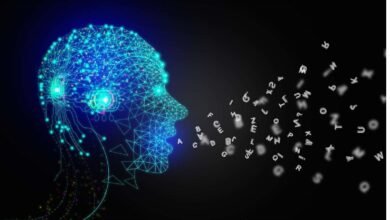Red vs. Blue: How Political Polarization is Changing the USA
Political Polarization in America is deepening the red vs blue divide reshaping elections media and social dynamics Explore causes impacts

Political polarization has transformed the American landscape, creating a nation increasingly divided along ideological lines. The widening gap between “Red” (Republican) and “Blue” (Democratic) America goes beyond policy disagreements—it reflects deep-rooted cultural, social, and geographic divides that influence elections, media consumption, and even personal relationships. As the two major political parties grow further apart, compromise becomes more difficult, leading to legislative gridlock, social fragmentation, and heightened distrust in institutions. Understanding the causes and consequences of this growing divide is essential to addressing one of the most pressing challenges facing the United States today.
The roots of modern political polarization can be traced to shifting demographics, media fragmentation, and the ideological sorting of the Republican and Democratic parties. Over the past few decades, the decline of political moderates and the rise of partisan media have reinforced echo chambers, where Americans are exposed only to viewpoints that align with their own. This environment fuels hostility, making it harder to find common ground on critical issues like healthcare, climate change, and voting rights. As Political polarization deepens, its effects ripple through every aspect of society, threatening the stability of democracy itself. Examining how we got here and exploring potential solutions is crucial for healing a fractured nation.
Red vs. Blue: How Political Polarization is Changing the USA
The Historical Evolution of Political Polarization
The United States has experienced political divisions since its founding, but the current level of polarization is unique in its intensity and pervasiveness. In the mid-20th century, both major parties contained liberal and conservative factions, allowing for bipartisan cooperation. However, the civil rights movement, the Vietnam War, and the cultural shifts of the 1960s and 70s began to realign party loyalties. Southern conservatives, once a Democratic stronghold, migrated to the Republican Party, while urban and minority voters increasingly aligned with Democrats.
The 1990s and early 2000s marked a turning point, as political rhetoric grew more combative. Newt Gingrich’s leadership in the House of Representatives introduced a more confrontational style of Republican politics, while Democrats also sharpened their ideological stance. The 2000 presidential election, decided by a controversial Supreme Court ruling, further deepened distrust between the parties. Over time, gerrymandering and primary elections favoring extreme candidates reduced incentives for compromise, entrenching polarization in Congress.
Media Fragmentation and the Rise of Echo Chambers
One of the most significant drivers of polarization is the transformation of the media landscape. In the past, major networks like CBS, NBC, and ABC provided relatively neutral news coverage, fostering a shared national narrative. Today, cable news channels like Fox News and MSNBC cater to partisan audiences, amplifying ideological divides. Social media platforms like Facebook and Twitter use algorithms that prioritize engaging (and often divisive) content, reinforcing users’ existing beliefs.
This media environment creates “echo chambers,” where individuals are rarely exposed to opposing viewpoints. Studies show that Republicans and Democrats increasingly inhabit separate information ecosystems, making it difficult to agree on basic facts let alone policy solutions. Misinformation spreads rapidly in these silos, further eroding trust in institutions and deepening societal divisions. The decline of local journalism has also contributed, as nationalized political conflicts overshadow community-based concerns.
Cultural and Identity-Based Polarization
Beyond policy disagreements, polarization has become intertwined with cultural identity. Political affiliation is no longer just about economic or governance preferences—it signals membership in a broader social tribe. Surveys indicate that many Americans view the opposing party not just as wrong but as a threat to the nation’s well-being. This “affective Political polarization” leads to hostility, with people less willing to associate with those from the other side, whether in friendships, workplaces, or marriages.
Moral Framing of Political Issues Intensifies Division
Issues like race, religion, and gender have become deeply polarized because they are increasingly framed in moral terms rather than as policy debates. For example Immigration is no longer just about border security but about national identity, with Democrats emphasizing compassion and diversity while Republicans focus on law and order. Police reform has turned into a clash over racial justice versus public safety, with “Defund the Police” slogans alienating conservatives while police brutality protests galvanize liberals.
Urban-Rural Divide Deepens Political and Cultural Alienation
The geographic split between cities and rural areas has turned into a self-reinforcing cycle of polarization, Cities tend to be younger, more diverse, and economically dynamic, leaning Democratic due to preferences for progressive policies on healthcare, climate, and social justice. Rural areas, facing economic decline and demographic stagnation, increasingly embrace Republican messaging on gun rights, religious liberty, and anti-elitism.
The Consequences of Extreme Polarization
The effects of polarization extend far beyond electoral politics. Legislative gridlock has become the norm in Congress, with even basic governance functions like budget approvals turning into partisan standoffs. Supreme Court nominations, once a relatively bipartisan process, are now fiercely contested, undermining the judiciary’s perceived impartiality. Political polarization also weakens America’s ability to respond to crises, as seen during the COVID-19 pandemic when public health measures became politicized.
On a societal level, Political polarization fosters distrust in institutions, from the media to scientific organizations. It also contributes to rising extremism, with fringe groups on both sides gaining influence. Violent rhetoric and incidents, such as the January 6 Capitol riot, highlight the dangers of unchecked division. Additionally, polarization affects mental health, with many Americans reporting stress and anxiety over political conflicts.
Can Polarization Be Reduced? Possible Solutions
While Political polarization is deeply entrenched, efforts to mitigate its effects are possible. Reforming electoral systems, such as adopting ranked choice voting or nonpartisan primaries, could encourage more moderate candidates. Media literacy programs could help citizens discern factual reporting from misinformation. Grassroots initiatives that bring opposing groups together for dialogue, such as Braver Angels, have shown promise in reducing hostility.
Structural changes, like reducing gerrymandering and limiting the influence of money in politics, could also help. However, rebuilding trust will require long-term cultural shifts, including a renewed emphasis on shared national identity over partisan loyalty. Leaders who prioritize unity over division, alongside civic education promoting democratic values, may help bridge the gap.
Read More: The Biggest Political Issues Shaping the USA in 2025
Conclusion
Political polarization has reshaped America’s social fabric and democratic institutions, creating a nation where compromise feels increasingly impossible. The deepening divide between Red and Blue America extends beyond policy disagreements to fundamental differences in identity, values, and trust in institutions. While some level of disagreement is healthy for democracy, the current level of hostility threatens governance, social cohesion, and even national stability. Addressing this crisis requires acknowledging its root causes—from partisan media and gerrymandering to the erosion of shared national narratives—and actively working to rebuild bridges across the political spectrum.
The challenge of overcoming political polarization is daunting, but not insurmountable. Solutions must include electoral reforms to reduce extremism, media literacy programs to combat misinformation, and grassroots efforts to foster dialogue between opposing groups. Leaders must prioritize unity over division, and citizens must recommit to the democratic ideals that have long held the nation together. While differences will always exist, finding common ground is essential to preserving a functioning democracy. The future of the United States depends on whether Americans can rise above partisan rancor and rediscover what unites them as a nation.
FAQs
What is political polarization?
Political polarization refers to the growing ideological divide between political parties, leading to increased hostility and decreased willingness to compromise.
How does media contribute to Political Polarization?
Partisan news outlets and social media algorithms reinforce echo chambers, where people only encounter information that aligns with their beliefs.
What are the consequences of Political Polarization?
Polarization leads to legislative gridlock, distrust in institutions, rising extremism, and societal divisions that affect personal relationships.
Can polarization be reduced?
Yes, through electoral reforms, media literacy, grassroots dialogue initiatives, and structural changes to encourage moderation.
Why is polarization worsening in the U.S.?
Factors include ideological realignment, media fragmentation, cultural identity politics, and electoral systems that reward extreme candidates.







